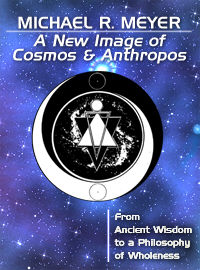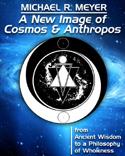
|

A New Image of Cosmos and Anthropos |

PREVIEW Part Two
Wholeness
and the New Paradigm It was stated in part two that a holistic and planetary frame of reference is required for a successful movement into a global age of harmony and fullness. But what principles underpin which a worldview and what progress has been made toward its acceptance? Over the past several years much attention and publicity has been given to the need for a "new paradigm" for social and scientific thought and to the immanent "paradigm shift." The new paradigm is holistic. As science-writers Paul Davies and John Gribbin put it in their recent book The Matter Myth, "the paradigm shift that we are now living through is a shift away from reductionism and toward holism; it is as profound as any paradigm shift in the history of science." Paradigm is one of those words that has been brandished about so much in recent years that it has become clichéd. In a few words, a paradigm is a collective mindset which is so ubiquitous, compelling and hypnotic that we fail to realize we are profoundly conditioned by it. In his book Synchronicity: The Bridge Between Matter and Mind, F. David Peat explains the paradigm of classical science and its all-pervading influence in these words— A paradigm is not simply a given branch of knowledge that is explicitly learned. But rather it includes the whole set of skills, attitudes, and approaches that are absorbed during each scientist's training and apprenticeship. . . . [The paradigm of classical science] therefore has a deep influence on the way each scientist approaches and thinks of nature and communicates his results and attitudes to others. . . . [It] is now so all pervasive that its influences has extended beyond the purely scientific domain into all aspects of life. This attitude to nature, and to ourselves, is far more than a highly organized branch of nature for it is a communal attitude of mind, a way of perceiving the world, of being disposed to act and to communication that, by now, appears wholly natural. Indeed it is no longer possible to see this worldview or paradigm, but rather everyone perceives through it. (pp. 119-120). The fact that the new paradigm for scientific and social thought is holistic, however, doesn't mean holism and holistic thought is new. On the contrary, it has figured in all pre-scientific worldviews. But it is new to modern thought because for several centuries it has been eclipsed by the atomistic, reductionistic and quantitative attitudes of classical science. Although holism isn't strictly new but new to modern thought, we can today more adequately understand and realize Wholeness than during any time in the past. We can because modern physics now affirms Wholeness and our worldwide communication network enables us to realize a planetary humanity. In other words, while in the past Wholeness was implicit, it is today an explicit, demonstrable fact confirmed by quantum mechanics. The word holism was introduced by Jan C. Smuts in 1926 in his seminal work Holism in Evolution. Yet today's exponents of holism and the holistic paradigm almost never mention Smuts and his work. Nor do they mention Dane Rudhyar. Concurrent with Smuts' development of the theory of holism, which focused largely on biological and material systems and their evolution, Rudhyar began a lifelong formulation of an all-inclusive interpretation of reality he termed "the philosophy of Operative Wholeness." Although Rudhyar later broadly accepted and integrated into the philosophy of Operative Wholeness many of the concepts and propositions of Smuts' formulation, he stressed that far from a final interpretation of holistic evolution, Smuts' work was severely limited by its strictly material, biological and psychological basis. In his 1983 grand summation Rhythm of Wholeness, Rudhyar observes that— Smuts' concept of holism was so limited that it led to a typically Western glorification of what he (and C.G. Jung) called personality—to him the supreme achievement of evolution. Therefore the concept of whole has to be broaden and universalized—more so indeed than recent philosophers-scientists interpreting the universe as a hierarchy of wholes (or systems) are able or willing to do. What is needed is to transfer the mind's attention and power of concentration from the image-concept of "the One" to that of "the Whole" and, even more, to Wholeness. (p. 20)
Read more and purchase the Kindle eBook at Amazon.com
Don't Have a Kindle? No problem! Download a free Kindle app for PC, MAC, Nook, iPad, iPhone, Tablets and Android devices at Amazon.com Text Copyright © 1995 by Michael R. Meyer All rights reserved  mail@khaldea.com Web design and all data, text and graphics appearing on this site are protected by US and International Copyright and are not to be reproduced, distributed, circulated, offered for sale, or given away, in any form, by any means, electronic or conventional. Unless otherwise noted, all text, data and graphics appearing on this site are copyright © 2000-2010 by Michael R. Meyer. All Rights Reserved. See Notices for copyright statement, conditions of use, and disclaimer. |About|Calendar|Ephemeris| |Charts|Art Gallery|Library|Resources| |Shop|Links|Rudhyar Archival Project|Help| Web design and programming for this entire site copyright © 2000-2004 by Michael R. Meyer. |
